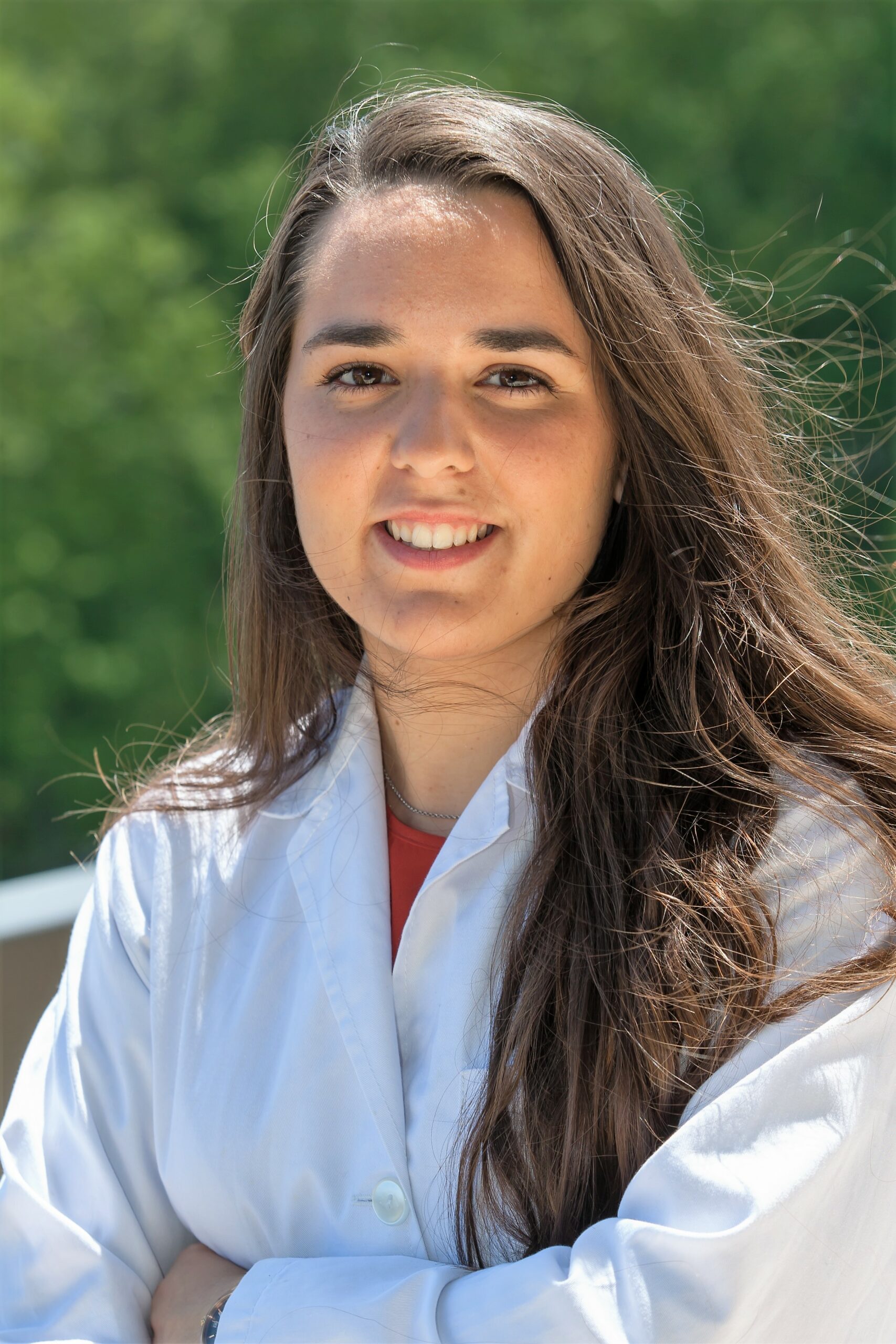Dr Beatriz Arce Lopez is an analytical chemist-toxicologist working on in vitro toxicological approaches of mycotoxin mixtures

Dr Beatriz Arce Lopez is an analytical chemist-toxicologist working on in vitro toxicological approaches of mycotoxin mixtures on the MyVitox project in the LUBEM laboratory (UBO).
[BIENVENUE Team] : Hello Beatriz, what is your background?
Risk assessment is very important to me, and I´ve always wanted to work in an environment where I can apply my background. I did my PhD in Food Science, Physiology and Health, in the area of Analytical Chemistry; an MSc in Drug Research, Development and Innovation and a degree in Chemistry from the University of Navarra (Spain). I was also one of the fellows of EU-FORA (European Food Risk Assessment Fellowship Programme, EFSA) at LUBEM (UBO, France).
My early career has been developed in academia in various areas of analytical chemistry and toxicology in the field of human exposure of mycotoxins, considering health risk assessment as a must.
The presence of mycotoxins in food is a global problem in terms of food safety, and therefore it is really interesting to evaluate their exposure to humans. In addition, because the human diet is very varied and there are many routes of exposure, there is a need for simultaneous compound analyses that contribute to assessing the overall problem in terms of food safety. This is an area of research that provides a direct assessment of health risks associated with chemical exposure, complementary to food analysis studies. Both approaches are complementary and necessary to better assess food safety risk.
Biomonitoring studies in humans (HBM) and new alternative methodologies (NAMs) are important approaches to the assessment of chronic exposure to toxins. Human biomonitoring (HBM), or the internal exposure of humans to a compound, consists of the measurement of a chemical or its metabolites (corresponding to the biomarkers of exposure) in biological matrices, such as blood, urine, milk, hair or tissues. HBM allows the assessment of risk resulting from human exposure to chemicals with proper exposure data, integrating all the exposure sources (e.g., food and air) and routes simultaneously. It represents the most accurate approach for assessing the exposure to mycotoxins, and can be used as a tool to complement external exposure assessments. New Approach Methodologies (NAMs) are technologies and approaches including any in vitro, in silico or computational modelling, as well as the strategies to implement them. NAMs can provide valuable information on chemical/biochemical hazard and risk safety assessment without the use of animal testing.
Therefore, having a broader exposure in this field and continuing to work in this area of research will be significantly relevant to my future career.
What is your project MyVitox about?
The Myvitox project proposes an innovative integrative toxicological approach to understand the effects and mechanisms of two main regulated mycotoxins (ochratoxin A (OTA) and fumonisin B1 (FB1)) of human concern.
Mycotoxins can cause a variety of adverse health effects and pose a serious health threat to both humans and animals. Exposure to mycotoxins produces different toxic effects, called mycotoxicosis, which can result in an acute mycotoxicosis (due to ingestion of high levels of toxins in a short period of time) or chronic mycotoxicosis (due to ingestion of low levels of toxins in a long period of time).
Since the toxicity of these molecules is not fully understood and their presence is constantly expanding with global warming and changes in crops throughout Europe and the world, the proposed project is directly linked to these scientific questions and was split in 2 different phases to better answer the different aspects.
To do so, the effect of OTA and FB1 on cellular and molecular mechanisms will be studied in depth by taking into account mycotoxin interactions with hepatic and intestinal cells well known targets of mycotoxin. Significant knowledge gaps related to mycotoxin toxicity will be investigated: the individual and combined toxicity will be addressed using innovative cell co-culture models and toxicological predictive approaches. The technological approach is useful, as not only intends to develop 2D and 3D models, especially on the cell targets, but also will contribute to animal use reduction. For each step of the project, and in order to study mycotoxins´metabolism, genic expression and analytical methodologies will be included using LC-Q-TOF to quantify extra-and intracellular levels of mycotoxins.
Therefore, the present work will demonstrate its usefulness for toxicological studies of mycotoxins in human cells through multi-contamination and/or chronic exposure and deliver new insights.
Why did you chose to implement your project in the LUBEM laboratory?
After finishing my PhD, I wanted to find an international laboratory where to further develop the research skills acquired in my doctoral program and learn new research techniques, in preparation for an academic or research career. Getting additional education in the field of metabolism or effect of biomarkers was an exciting opportunity to complement my background.
The Laboratoire Universitaire de Biodiversité et Ecologie Microbienne (LUBEM) has works for many years on innovative topics related to moulds (e.g. fungal diversity in the agri-food environment, predictive mycology, antifungal biopreservation), thereby creating new scientific knowledge on these ubiquitous microorganisms. Concerning these microorganism metabolism, the lab focuses mainly on secondary metabolites, in particular mycotoxins and their toxicological impact with in vitro approaches.
In this field of research, my main supervisor, Dr. Nolwenn Hymery, has a large experience on cellular toxicological evaluation of these metabolites to move away from animal testing and toward the use of in vitro methods, in agreement with the 3R concept (Replacement, Reduction and Refinement), which refers to animal use alternatives. This is one of the main challenges to better take into account the reality of mycotoxins and have an impact on risk assessment.
Thank you Beatriz!
